You can help expand this article with text translated from the corresponding article in German. (December 2023) Click for important translation instructions.
|
| Federal Border Protection Bundesgrenzschutz | |
|---|---|
 BGS Federal Eagle (Bundesadler) worn from 1976 until 2001 BGS Federal Eagle (Bundesadler) worn from 1976 until 2001 | |
| Abbreviation | BGS |
| Agency overview | |
| Formed | March 16, 1951 (renamed to Bundespolizei on 1 July 2005) |
| Superseding agency | Federal Police |
| Employees | 16,414 (1956) 38,000 (1999) |
| Annual budget | DM 376 million (1970) € 1.942 billion (2004) |
| Jurisdictional structure | |
| Federal agency | Germany |
| Operations jurisdiction | Germany |
| General nature | |
| Specialist jurisdiction |
|
| Operational structure | |
| Parent agency | Federal Ministry of the Interior |
| Notables | |
| People |
|

Bundesgrenzschutz (German: [ˌbʊndəsˈɡʁɛnt͡sʃʊt͡s] ; abbreviation: BGS; English: Federal Border Protection) is the former name of the German Bundespolizei (Federal Police). Established on 16 March 1951 as a subordinate agency of the Federal Ministry of the Interior, the BGS originally was primarily focused on protecting the West German borders. During their early days, BGS units had military structures, training and equipment. The law enforcement officers legally had military combatant status until 1994. A major part of the early BGS personnel joined the newly founded German Armed Forces (Bundeswehr) in 1956 and thus significantly contributed to West Germany's rearmament. The BGS was renamed to Bundespolizei on 1 July 2005. The change of name did not have any effect on the legal status or competencies of the agency, but rather reflects its transition to a multi-faceted police agency with control over border, railway and air security.
History
The newly established Federal Republic of Germany wanted to set up its own federal border guard and police. The founding act of the Federal Border Protection (Bundesgrenzschutz, BGS) was adopted on 14 November 1950 by the federal cabinet and on 15 February 1951 by the Bundestag. The BGS was established on 16 March 1951.
The Cold War had begun, but travel between East and West Germany was not yet restricted by the Berlin Wall (1961). German nationals could move freely from the DDR to the BRD in Berlin, but people attempting to cross illegally elsewhere were likely to be either commercial smugglers or espionage agents carrying contraband (e.g., radio transmitters.). Occupation authorities judged this could be better policed by a permanent force of Germans who intimately knew the border woods and mountains (rather than British or US troops who rotated out of Germany after a year or two) and at German rather than Allied expense. The BGS was organized along paramilitary lines in battalions, companies, and platoons, and was armed as light infantry. It remained a police force controlled by the Ministry of Interior rather than by the Ministry of Defense.
A maritime border protection unit (Seegrenzschutz) was formed as part of the BGS on 1 July 1951. It consisted of approximately 550 members and was equipped with fourteen large patrol craft and several helicopters.
On 3 October 1953 the Bundespasskontrolldienst (passport control service), which had been established on 19 September 1951, was transferred to the BGS and was now deployed on the entire German border.
The BGS was initially a paramilitary force of 10,000 which was responsible for policing a zone 30 kilometres (19 mi) deep along the border. It eventually became the basis for the present national semi-militarised police force. On 19 June 1953 its authorized strength was expanded to 20,000 men, a mixture of conscripts and volunteers equipped with armoured cars, anti-tank guns, helicopters, trucks and jeeps. By 1956, it had a strength of 16,414 men. Upon the formation of the Bundeswehr in 1955, over 10,000 members of the BGS voluntarily joined the new German military in 1956. The Seegrenzschutz (Maritime Border Protection) was completely absorbed into the German Navy that year. A new maritime border protection unit was set up in the fall of 1964 as the Bundesgrenzschutz See (BGS See; BGS Sea).
Although it was not intended to be able to repel a full-scale invasion, the BGS was tasked with dealing with small-scale threats to the security of West Germany's borders, including the international borders as well as the inner German border. It had limited police powers within its zone of operations to enable it to deal with threats to the peace of the border. The BGS had a reputation for assertiveness, which made it especially unpopular with East Germans, who routinely criticized it as a reincarnation of the Zollgrenzschutz from the days of Nazi Germany. It also sustained a long-running feud with the Bundeszollverwaltung over which agency should have the lead responsibility for the inner German border.
The passing of the German Emergency Acts on 30 May 1968 relieved the BGS of its quasi-military tasks, because the Bundeswehr could now operate inside the Federal Republic in the case of an emergency. A military rank structure similar to that of the Bundeswehr was replaced in the mid-1970s by civil service-type personnel grades. The service uniform was green, but field units wore camouflage fatigues and, at times, steel helmets and military training was still carried out.

In 1972, the BGS became responsible for the security of the Federal Constitutional Court, the Bundespräsident (Federal President), the Bundeskanzler (Federal Chancellor), the Foreign Office, and the Federal Ministry of the Interior. Although the Compulsory Border Protection Service law is still in force, in 1974 the BGS became an all-volunteer enrollment force and in 1987 started recruiting women.
Among other things, it was equipped with armored cars, machine guns, automatic rifles, tear gas, hand grenades, rifle grenades, and antitank weapons. All personnel on border and security duty wore sidearms. Five units had light aircraft and helicopters to facilitate rapid access to remote border areas and for patrol and rescue missions. Some units were effectively Mountain troops because of their specialised training, equipment, and operational area (e.g., Bavarian Alps).
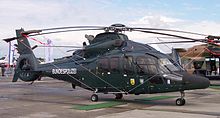
In addition to controlling Germany's border, the BGS Alert police served as a federal reserve force to deal with major disturbances and other emergencies beyond the scope of the regional police. The BGS guarded airports and foreign embassies, and several highly trained detachments are available for special crisis situations requiring demolition equipment, helicopters, or combat vehicles.
The BGS consisted four border protection commands, which included a total of eight border protection groups: Grenzschutzgruppen (GSG) 1 through 7, along with a maritime unit.
After shortcomings in regional state police procedures and training were revealed by the terrorist attack on Israeli athletes at the 1972 Summer Olympics, a BGS unit known as Border Protection Group 9 (GSG 9) was formed to deal with counter-terrorism incidents, especially hostage situations. The GSG 9 was not integrated into any of the existing groups. It won world attention when it rescued ninety passengers on a Lufthansa Flight 181 airliner hijacked to Mogadishu, Somalia, in 1977.
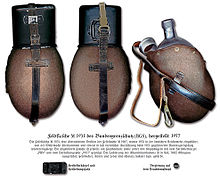
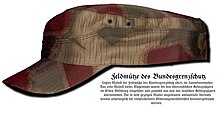
June 1990 saw the elimination of border patrols and control of persons at the Inner-German border. Upon German reunification on 3 October 1990, the East German Transportpolizei duties, and responsibility for air security in the new federal states, were taken over by the BGS. The German Railway Police (Bahnpolizei), formerly an independent force, was restructured under the BGS on 1 April 1992 in preparation for the railway's privatization. The (formerly federally run) railway system remains a federal competency and Länder police forces have no authority over the railways.
The strength of the BGS was 24,000 in early 1995.
Notable personnel
Weapons and Equipment
Helicopters
- Aerospatiale Alouette II
- Aerospatiale SA 330 Puma
- Bell H-13 Sioux
- Bell UH-1 Iroquois
- Eurocopter EC155
Gallery
-
 BGS uniforms c. 1987
BGS uniforms c. 1987
-
 10th anniversary parade in Lübeck, 1961. Visible vehicles are Mowag MR 8s.
10th anniversary parade in Lübeck, 1961. Visible vehicles are Mowag MR 8s.
-
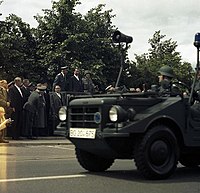 10th anniversary parade in Lübeck, 1961. The vehicle in the foreground is a DKW-Munga.
10th anniversary parade in Lübeck, 1961. The vehicle in the foreground is a DKW-Munga.
-
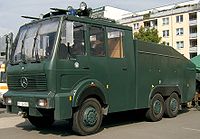 Water cannon , Frankfurt (Oder) 12
Water cannon , Frankfurt (Oder) 12
-
 Hanomag AL-28 BGS Funkkraftwagen (Radio Car) L
Hanomag AL-28 BGS Funkkraftwagen (Radio Car) L
-
 A Bundesgrenzschutz Alouette II helicopter patrols the West German side of the inner German border, 1985.
A Bundesgrenzschutz Alouette II helicopter patrols the West German side of the inner German border, 1985.
-
 Members of the 11th Armored Cavalry stop to talk with West German border police while patrolling the border between East and West Germany in M151 light vehicles.
Members of the 11th Armored Cavalry stop to talk with West German border police while patrolling the border between East and West Germany in M151 light vehicles.
-
 West German border guard, civilians and an East German border guard on opposite sides of the border line at Herrnburg near Lübeck.
West German border guard, civilians and an East German border guard on opposite sides of the border line at Herrnburg near Lübeck.
See also
- Allied-occupied Germany
- Bavarian Border Police
- B-Gendarmerie
- Border guards of the inner German border
- British Frontier Service
- Bundeszollverwaltung (Federal Customs Service)
- Crossing the inner German border
- Development of the inner German border
- Escape attempts and victims of the inner German border
- Fall of the inner German border
- Fortifications of the inner German border
- Grepo
- Helmstedt–Marienborn border crossing (Checkpoint Alpha)
- United States Zone Constabulary
- Volkspolizei-Bereitschaft (East German Riot Police)
- East German border guards
- Zollgrenzschutz
References
![]() This article incorporates text from this source, which is in the public domain. Country Studies. Federal Research Division.
This article incorporates text from this source, which is in the public domain. Country Studies. Federal Research Division.
- ^ Bundespolizei (2011). "Historie der Bundespolizei". Archived from the original on 8 February 2011. Retrieved 11 August 2013.
- Moncourt, André; Smith, J. (2009). The Red Army Faction, a Documentary History: Volume 1: Projectiles for the People. Oakland, CA: PM Press. p. 22. ISBN 978-1-60486-029-0.
- Shears, David (1970). The Ugly Frontier. London: Chatto & Windus. OCLC 94402., pp. 96–97
External links
- BPOL History site
- Bundespolizei home page (in German)
- Information brochure about the Bundespolizei (in German and English) last updated August 2005
- German language pages on the BGS
- (in German) - You can see the old Bundesgrenzschutz in historic pictures and films and you can listen songs of the Bundesgrenzschutz
- BPOL BGS History page
- http://www.beim-alten-bgs.de
- http://www.bgs-erinnerung.de
- http://www.grenzstreife.de
- Die Mowag-Sonderwagen des BGS
| Law enforcement in Germany | |
|---|---|
| Federal law enforcement agencies | |
| State police forces | |
| Special units or branches | |
| Local public order forces | |
| Defunct | |
| Nazi Germany (Defunct) | |
| Border protection agencies (list) | |
|---|---|
| Africa |
|
| Asia |
|
| Europe |
|
| North America |
|
| Oceania |
|
| South America | |
| International | |
| Non-recognized | |
| Defunct |
|